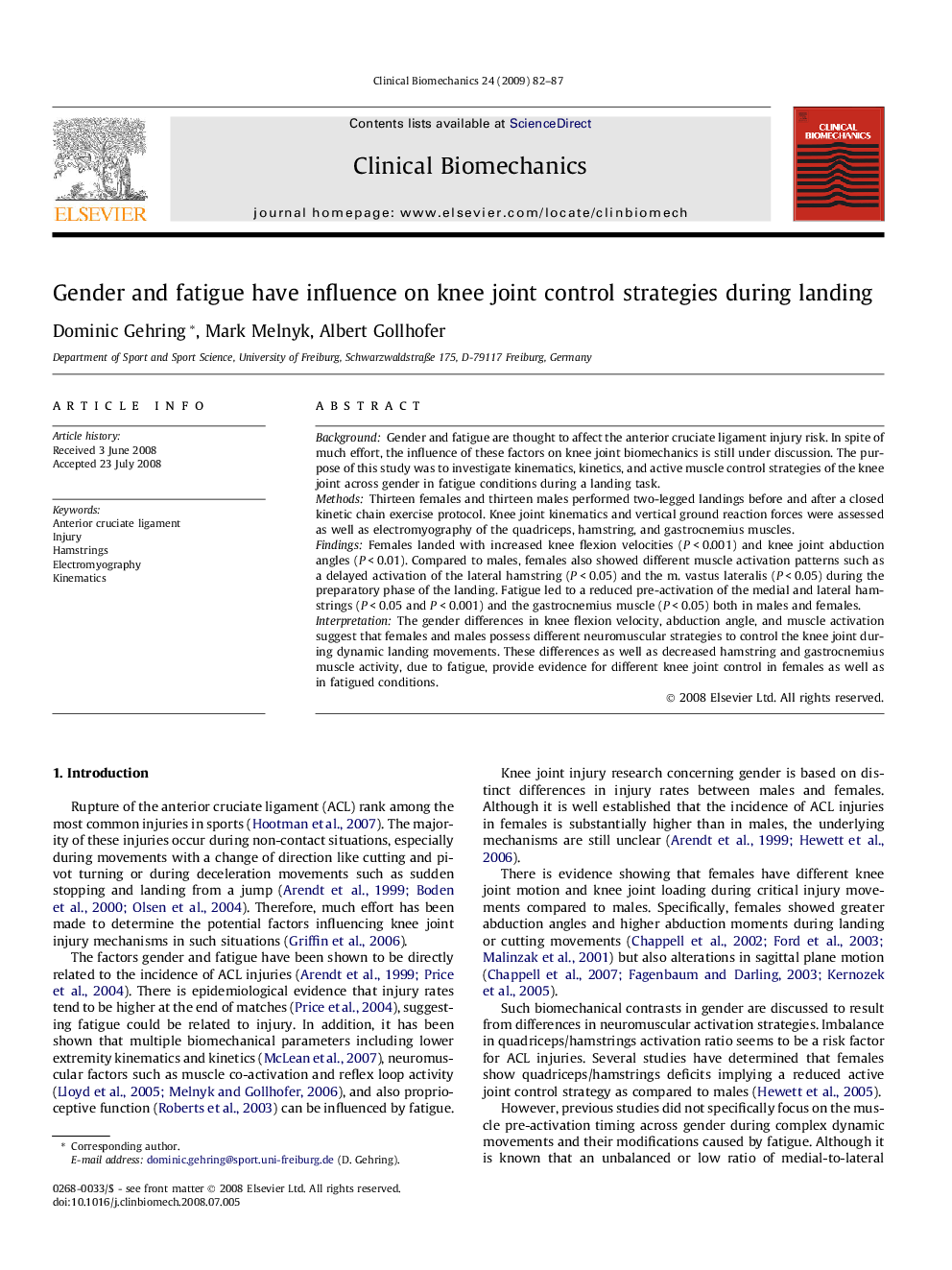| Article ID | Journal | Published Year | Pages | File Type |
|---|---|---|---|---|
| 4050849 | Clinical Biomechanics | 2009 | 6 Pages |
BackgroundGender and fatigue are thought to affect the anterior cruciate ligament injury risk. In spite of much effort, the influence of these factors on knee joint biomechanics is still under discussion. The purpose of this study was to investigate kinematics, kinetics, and active muscle control strategies of the knee joint across gender in fatigue conditions during a landing task.MethodsThirteen females and thirteen males performed two-legged landings before and after a closed kinetic chain exercise protocol. Knee joint kinematics and vertical ground reaction forces were assessed as well as electromyography of the quadriceps, hamstring, and gastrocnemius muscles.FindingsFemales landed with increased knee flexion velocities (P < 0.001) and knee joint abduction angles (P < 0.01). Compared to males, females also showed different muscle activation patterns such as a delayed activation of the lateral hamstring (P < 0.05) and the m. vastus lateralis (P < 0.05) during the preparatory phase of the landing. Fatigue led to a reduced pre-activation of the medial and lateral hamstrings (P < 0.05 and P < 0.001) and the gastrocnemius muscle (P < 0.05) both in males and females.InterpretationThe gender differences in knee flexion velocity, abduction angle, and muscle activation suggest that females and males possess different neuromuscular strategies to control the knee joint during dynamic landing movements. These differences as well as decreased hamstring and gastrocnemius muscle activity, due to fatigue, provide evidence for different knee joint control in females as well as in fatigued conditions.
